Vanda Felbab-Brown and Elisa Norio write that in North America, including Mexico, global warming has immensely exacerbated the frequency, scale, and intensity of fires and altered their patterns, pushing them beyond human control. Yet the Andrés Manuel López Obrador administration, like the Trump administration, has rolled back measures to reduce global warming and has embraced policies that exacerbate both global warning and destructiveness of fires. This piece was originally published by La Reforma’s Mexico Today.
When a brush fire erupted near Tijuana in early September, a large part of the North American western coast was either on fire or at high risk of fire. The dramatic fire belt stretched from Canada to northern Mexico. Although the most devastating damages has occurred in the United States this year (in states such as California, Oregon, and Colorado) Mexico too is at critical risk of ever greater and more dangerous fires. Exploitable by criminal groups, the fires wreak enormous human and environmental damage. In North America, including Mexico, global warming has immensely exacerbated the frequency, scale, and intensity of fires and altered their patterns, pushing them beyond human control. Yet the Andrés Manuel López Obrador administration, like the Trump administration, has rolled back measures to reduce global warming and has embraced policies that exacerbate both global warning and destructiveness of fires.
From January 1 through September 17, 2020, the Mexican National Forestry Commission (CONAFOR) registered 5,583 wildfires across Mexico, affecting some 310,000 hectares (ha) of grassland and 23,000 ha of forest. In Baja California, 101 fires during that period burned down 43,308 hectares. Although large, that number is still nowhere near the 1998 peak when 14,445 wildfires raged across Mexico and affected 5,139,302 ha.
But this year’s lesser number does not indicate lesser danger or sounder policies. Across Mexico and Central America, close to half of the fires are due to agricultural activities. Many are also linked to poverty and a lack of forestry culture. Fires are set to clear areas logged of valuable timber trees to generate pasture for cattle. They are frequently reset yearly to improve the palatability of young grass to cows or to eliminate crop parasites. They destroy fragile ecosystems and biodiversity, killing insects, reptiles, and other small animals capable of eking out existence in an already severely degraded habitat, and contribute to soil erosion and water runoff. The latter two results in turn reduce rain water absorption and magnify the drying out of soil and any remaining vegetation, creating perfect conditions for further fires. Critically, such fires release large quantities of carbon dioxide, thus exacerbating global warning.
Global warming has changed the nature of wildfires: Wildlife seasons have become longer and fires larger in size and intensity. They now happen in places where previously they did not occur. Global warming is driving some forests into a stressed state, reducing water in the vegetation and thus creating highly fire-prone conditions across large landscapes. Extreme heat associated with global warming also changes the pattern of fires, creating “kiln-like conditions” across vast areas, making fires burn hotter and more unpredictably. The potent blazes have been setting off towering plumes of heat, called pyrocumulus clouds, triggering lightning storms and swirling fire tornadoes. Powerful winds carry fires faster and farther than used to be the case.
These effects of global warming are evident in Mexico. Yet harking back to the 1950s, President Andrés Manuel López Obrador has embraced policies that exacerbate global warming and rolled back clean energy measures despite his campaign commitments to move Mexico away from fossil fuels. Although President López Obrador rails against fracking, he has coddled Mexico’s struggling oil company Petroleos Mexicanos (Pemex) to generate resources for his economic redistribution programs. And he has pledged a new US $8 billion for an oil refinery in his home state in Tabasco – a high-capital, low-margin, low-employment project that energy experts see as a waste of money. In addition, he has promoted the dirty, inefficient, corruption-ridden, and expensive Comisión Federal de Electricidad (CFE), apparently seeking to allow it to maintain close to a monopoly on electricity generation. In doing so, López Obrador has sought to prevent dozens of privately-owned wind and solar plants from connecting to the national electric grind — like Trump, alleging that wind and solar power are unreliable and do not provide benefits. López Obrador has also cancelled Mexico’s fourth clean energy auction even though the prior three, unlike oil auctions, were highly successful, generating 7 gigawatts of wind and solar clean energy at a very low cost for consumers, much lower than CFE prices. Thus, by embracing oil, López Obrador fuels global warming and devastating fires.
Deforestation in Mexico (a subject of a forthcoming column) further exacerbates global warming and wildfires by reducing carbon and water absorption. In Mexico, deforestation and illegal loggingare perpetrated by poor artisanal loggers and poor farming communities and intensively associated with avocado farming from Michoacán to Jalisco. Increasingly, they also involve drug trafficking organizations. Plagued by allegations of abuse and corruption, the vaunted reforestation program of President López Obrador to plant cedar and mahogany trees has so far not kept pace with deforestation. Although aiming to create 400,000 jobs (and additional tens of thousands in Central America where the Mexican government extended the program to keep migrants from entering Mexico), the slow pace of the program’s implementation has so far not significantly increased carbon capture in Mexico either.
Around the world, criminal groups not only engage in illegal logging; they also intentionally set fires to clear land so they can take it over, speculate with it, and sell it to farmers. Even though such deforestation critically exacerbates viral spillovers from animals to humans that set off catastrophic pandemics such as this year’s coronavirus (COVID-29), the specter of COVID-19 has not halted illegal logging, deforestation, and illegally set fires. The COVID-19 lockdowns may have prevented forest rangers from patrolling forests and natural habitats, but not criminal groups and powerful logging and farming industries. Impoverished people in urban spaces and rural areas have been entering forests to log, set off fires, and convert crucial biodiversity habitats and carbon-capturing systems into ash and ultimately cattle grassland or African oil palm plantations.
Lax and weakening government rules in Indonesia and Brazil exemplify the susceptibility of revenue-starved governments to vested interests and approaches that exacerbate global warming, zoonotic disease pandemics, and devastating fires. Through the middle of August, more fires have burned in Brazil, mostly in the Amazon, but also in Pantanal and the Cerrado, than last year, despite President Jair Bolsonaro’s nominal 120-day ban on fires.
Even though in September 2020 the Green Climate Fund questionably awarded Indonesia a $103.8 billion payment for preventing forestation and thus releasing carbon dioxide between 2014 and 2016, significant deforestation and fires there persist at very high rates. In the first weeks of 2020, forest loss in Indonesia rose by 50 percent. The deforestation is not only environmentally catastrophic and facilitates zoonotic pandemics: the associated fires that pollute air with dangerous PM2.5 particles further weaken lungs, amplify the dangerous health impacts of COVID-19 on the respiratory system, and augment COVID-19 death rates. And yet, criminal groups and criminally-behaving companies continually set off the illegal fires even in the most biodiversity rich, catastrophic fire-prone, and high-carbon-release places such as peat forests.
In southern Italy, mafia groups use fires to establish or reinforce territorial control and intimidate local populations. They also use arson to destroy fields and farms that law enforcement seized and confiscated from them and transferred to civil society groups and anti-mafia associations. Just like in Mexico, Indonesia, and Brazil, they also set fires to force land use changes, such as by converting land from agricultural into urban character to permit speculative construction projects in which they have high investments. The mafia groups have also found a way around legislation to prevent criminal building speculation linked to arson and prevent eco-crimes, by forcing local public authorities to classify burned forests land as agricultural lots, a type of land that can be converted into urban zoning readily. This year’s summer has seen no relief from destructive arson cases all along the Italian peninsula.
What then are the policy implications for Mexico? First of all, the López Obrador administration needs to return to its campaign pledges and make serious investments in reducing global warming and moving toward clean energy sources like solar and wind power. That may be a policy change impossible for López Obrador to swallow: but if Joseph Biden is elected the U.S. president in November, Mexico would again have a ready partner for such an effort. Second, the López Obrador administration needs to stop starving the budgets of critical institutions that protect forests from illegal logging such as various governmental environmental agencies and those that fight fires such as CONAFOR. Controlled fires of low-intensity during conditions not conducive to dramatic fire spread can be highly beneficial ecologically by enabling regrowth, plant species diversity, greater secondary growth, recycling of nutrients, and creation of seed beds. And they can be a very good fire-risk reduction measure. But such fires need to be based on sound science and close collaboration between forestry and global warming experts and fire fighters. Critically, the Mexican government needs to encourage rural development practices that avoid both extensive use of fires and deforestation. Broadly, fire use must reconcile its agricultural role with its ecological impacts – positive and negative. Finally, the Mexican government needs to get ready and diligently act against large farming industry and criminal cartels that set land on fire in order to speculate in cattle or buildings.
Given the intensity of global warming and prevailing policies, more and more dramatic fires are tragically in store for Mexico, North America, and the world. But that should not be an excuse for failing to implement what is possible, so as to limit at least the most catastrophic impacts on people and nature.
The Brookings Institution is committed to quality, independence, and impact.
We are supported by a diverse array of funders. In line with our values and policies, each Brookings publication represents the sole views of its author(s).

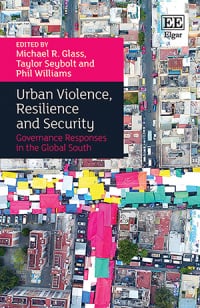


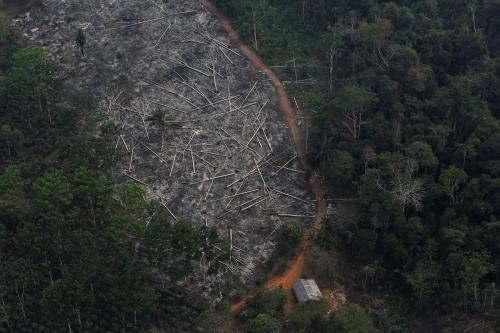
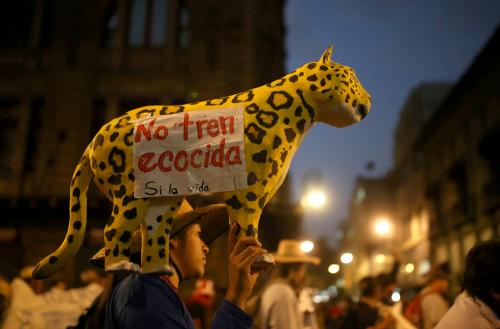
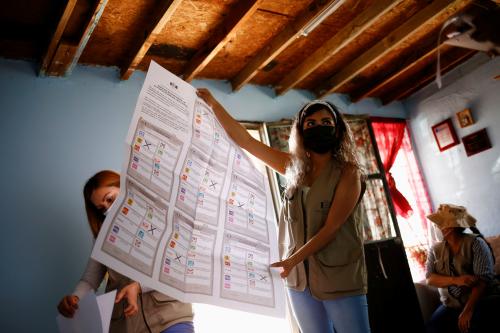


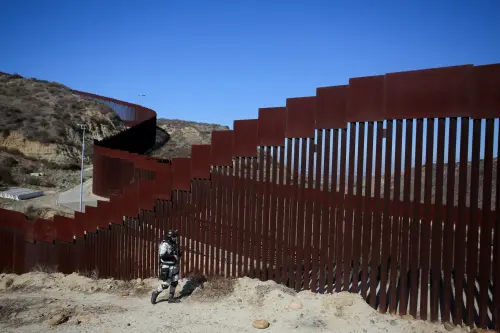

Commentary
Global warming, fires, and crime in Mexico and beyond
September 28, 2020